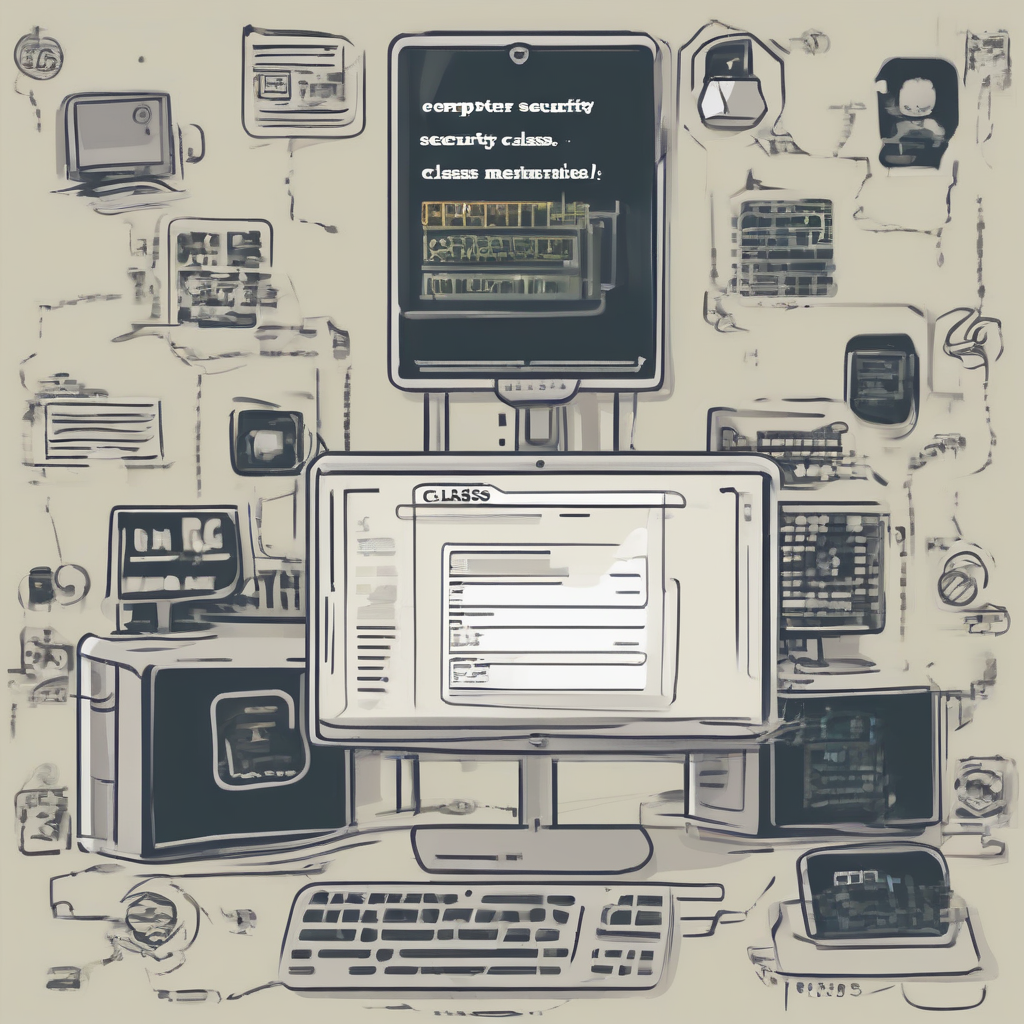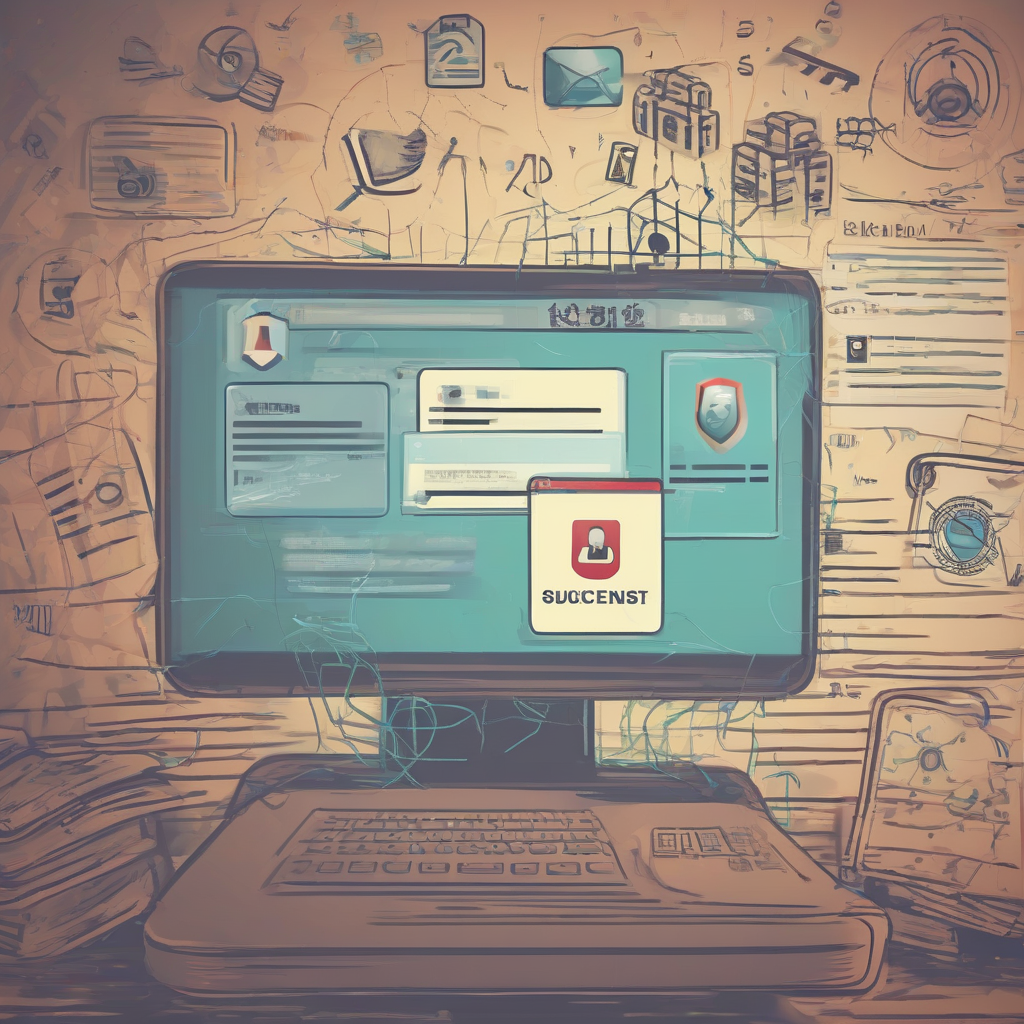Unraveling the Enigma: A Deep Dive into Computer Security
This comprehensive guide explores the multifaceted world of computer security, delving into key concepts, threats, and defensive strategies. It’s designed to provide a foundational understanding for anyone seeking to navigate the increasingly complex digital landscape.
I. Foundational Concepts
Before tackling specific threats and defenses, it’s crucial to understand the core principles underpinning computer security.
A. The CIA Triad: Confidentiality, Integrity, Availability
The CIA triad forms the bedrock of information security. It emphasizes three critical aspects:
- Confidentiality: Ensuring that sensitive information is accessible only to authorized individuals or systems. This involves access control mechanisms, encryption, and data masking techniques.
- Integrity: Maintaining the accuracy and completeness of data. This prevents unauthorized modification or deletion of information, relying on techniques like checksums, digital signatures, and version control.
- Availability: Guaranteeing that authorized users have timely and reliable access to information and resources. This involves redundancy, failover mechanisms, and disaster recovery planning.
B. Security Models
Various models guide the design and implementation of security systems. Some prominent examples include:
- Bell-LaPadula Model: Focuses on confidentiality, employing strict access control rules based on security clearances and data classifications.
- Biba Model: Prioritizes integrity, preventing unauthorized modification of data through rules governing read and write access based on integrity levels.
- Clark-Wilson Model: Integrates both confidentiality and integrity, using well-formed transactions and separation of duties to ensure data consistency and accuracy.
C. Risk Management
Effective security requires a proactive approach to risk management. This involves:
- Risk Identification: Identifying potential threats and vulnerabilities.
- Risk Assessment: Evaluating the likelihood and impact of each identified risk.
- Risk Mitigation: Implementing strategies to reduce or eliminate identified risks.
- Risk Monitoring and Review: Continuously monitoring and reassessing risks to adapt to changing circumstances.
II. Common Threats and Vulnerabilities
Understanding common threats and vulnerabilities is essential for building robust security defenses.
A. Malware
Malware encompasses various malicious software designed to damage, disrupt, or gain unauthorized access to computer systems. Examples include:
- Viruses: Self-replicating programs that spread by infecting other files.
- Worms: Self-replicating programs that spread across networks without requiring user interaction.
- Trojans: Malicious programs disguised as legitimate software.
- Ransomware: Malware that encrypts files and demands a ransom for their release.
- Spyware: Software that secretly monitors user activity and collects sensitive information.
B. Phishing and Social Engineering
These attacks exploit human psychology to trick individuals into revealing sensitive information or performing actions that compromise security.
- Phishing: Attempts to acquire sensitive information such as usernames, passwords, and credit card details by disguising as a trustworthy entity.
- Spear Phishing: Highly targeted phishing attacks that focus on specific individuals or organizations.
- Baiting: Offering something valuable in exchange for sensitive information.
- Pretexting: Creating a believable scenario to manipulate individuals into divulging information.
C. Network Attacks
Attacks targeting network infrastructure can disrupt services and steal data.
- Denial-of-Service (DoS) Attacks: Flooding a network or server with traffic to make it unavailable to legitimate users.
- Distributed Denial-of-Service (DDoS) Attacks: Launching DoS attacks from multiple sources to overwhelm the target.
- Man-in-the-Middle (MitM) Attacks: Intercepting communication between two parties to eavesdrop or manipulate data.
- SQL Injection: Exploiting vulnerabilities in database applications to gain unauthorized access to data.
D. Software Vulnerabilities
Software flaws can create entry points for attackers.
- Buffer Overflow: Writing data beyond the allocated buffer, potentially overwriting adjacent memory and executing malicious code.
- Cross-Site Scripting (XSS): Injecting malicious scripts into websites to steal user data or redirect users to malicious websites.
- Cross-Site Request Forgery (CSRF): Tricking users into performing unwanted actions on a website.
III. Security Defenses and Best Practices
Implementing robust security defenses is crucial to mitigate risks and protect against threats.
A. Access Control
Restricting access to sensitive information and resources is fundamental.
- Authentication: Verifying the identity of users and systems.
- Authorization: Determining what actions authenticated users are permitted to perform.
- Role-Based Access Control (RBAC): Assigning permissions based on user roles.
- Attribute-Based Access Control (ABAC): Defining access control policies based on attributes of users, resources, and environments.
B. Encryption
Protecting data confidentiality by converting it into an unreadable format.
- Symmetric Encryption: Using the same key for encryption and decryption.
- Asymmetric Encryption: Using separate keys for encryption and decryption (public and private keys).
- Digital Signatures: Verifying the authenticity and integrity of digital documents.
C. Firewalls
Network security systems that monitor and control incoming and outgoing network traffic based on predefined rules.
- Packet Filtering Firewalls: Inspecting individual packets and allowing or blocking them based on specified criteria.
- Stateful Inspection Firewalls: Tracking network connections and applying context-aware rules.
- Application-Level Gateways: Inspecting application-level traffic and enforcing security policies.
D. Intrusion Detection and Prevention Systems (IDPS)
Systems that monitor network traffic and system activity for malicious behavior.
- Intrusion Detection Systems (IDS): Detect and alert on suspicious activity.
- Intrusion Prevention Systems (IPS): Detect and block malicious activity.
E. Security Awareness Training
Educating users about security threats and best practices is crucial.
- Phishing awareness training: Educating users on how to identify and avoid phishing attempts.
- Password management training: Teaching users to create and manage strong passwords.
- Social engineering awareness training: Educating users on how to avoid social engineering attacks.
F. Regular Security Audits and Penetration Testing
Proactive security measures to identify and address vulnerabilities.
- Vulnerability scanning: Identifying known software vulnerabilities.
- Penetration testing: Simulating real-world attacks to identify security weaknesses.
- Security audits: Evaluating security controls and practices to ensure compliance with standards and regulations.
G. Data Loss Prevention (DLP)
Protecting sensitive data from unauthorized access, use, disclosure, disruption, modification, or destruction.
- Data Classification: Categorizing data based on sensitivity and value.
- Access Control Policies: Implementing granular control over data access.
- Data Encryption: Protecting data at rest and in transit.
- Data Loss Prevention Tools: Monitoring and preventing sensitive data from leaving the organization’s control.
IV. Emerging Trends in Computer Security
The field of computer security is constantly evolving, with new threats and defenses emerging regularly.
- Artificial Intelligence (AI) in Security: Utilizing AI for threat detection, incident response, and vulnerability management.
- Blockchain Technology in Security: Enhancing security and trust through decentralized and immutable ledgers.
- Zero Trust Security: Implementing a security model that assumes no implicit trust and verifies every access request.
- Cloud Security: Protecting data and applications in cloud environments.
- Internet of Things (IoT) Security: Securing the growing number of interconnected devices.




